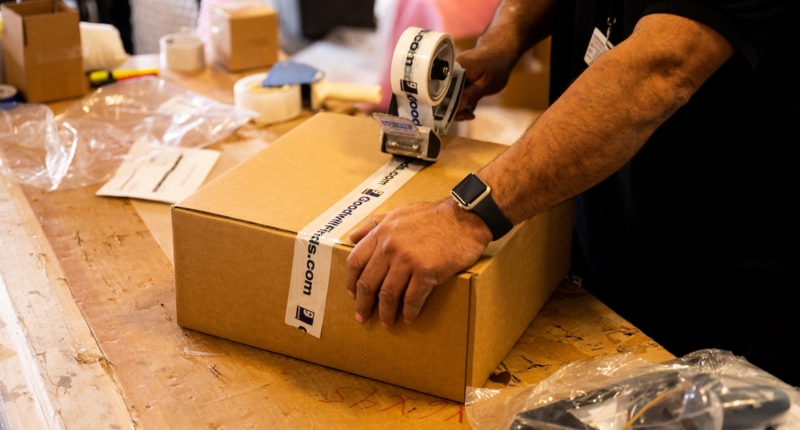GoodwillFinds, the online marketplace of nonprofit retailer Goodwill, has a unique approach to building and expanding its secondhand marketplace. The company leverages brand recognition and a vast supply of donated items to list one million items by the end of the year. GoodwillFinds is building tech around members’ existing inventory and warehousing, allowing member stores to price, list, and ship out orders on-site without transferring inventory around. As the platform scales up, paid ad channels such as TikTok and Instagram influencers will be turned on. GoodwillFinds has received interest from retailers in either donating bulk merchandise or cross-listing the platform’s products on their own websites, and luxury and designer brands have expressed interest in partnerships where Goodwill can act as an objective secondhand authenticator. According to CEO Matthew Kaness, GoodwillFinds aims to revolutionize resale in America and help pioneer circular retail.
GoodwillFinds onboards new executives with plans to list 1 million items by year-end
Goodwill, the nonprofit retailer, has taken a distinctive approach to expand its secondhand marketplace, GoodwillFinds. Since launching in October 2022, GoodwillFinds has sold over 200,000 items, prompting the company to aim to double inventory by the end of the year by listing one million items. The move is aimed at boosting Goodwill’s slew of community-based programs, including job training, employment placement services, and youth mentorship.
E-commerce is the future of Goodwill, which has been operating thrift shops for more than a century, according to the organization. To build on the momentum, GoodwillFinds is onboarding more member stores to increase inventory listings, and the team announced the addition of two new c-suite executives to compete better in the crowded resale industry. GoodwillFinds’ CEO, Matthew Kaness, said the company aims to establish an e-commerce business so that Goodwill can thrive in the next hundred years.
The new executives hired are Jim Davis and Nicolas Genes, joining as chief revenue officer and chief technology officer, respectively. Davis has previously worked at Dell, Office Depot, and Buck Mason, while Genes has worked at TheRealReal and ModCloth.
GoodwillFinds partnered with Salesforce to create the platform’s technology for the launch, and the operation began with four regional members in Chicago, Seattle, Colorado, and the Los Angeles areas. This spring, three more regions, Goodwill Industries of South Florida, Goodwill Akron, and Goodwill Industries of Greater Cleveland and East Central Ohio, are coming on board. This move adds more than 50 Goodwill retail stores to the platform, bringing the total to 360, and the company expects the figure to double by the end of 2023.
Despite lacking venture backing, GoodwillFinds has a few advantages over the likes of ThredUp and TheRealReal, according to Kaness. The Goodwill brand and its legacy have been driving repeat customers, with consumers returning to shop on the platform. The company aims to double the size of its team of about 20 employees to support demand, with the goal of “scaling resale profitably,” Kaness said.
GoodwillFinds leverages brand recognition and unique supply to scale profitable resale
GoodwillFinds, the online marketplace of nonprofit retailer Goodwill, has the advantage of brand recognition and a vast supply of donated items. The company aims to expand its marketplace by listing one million items by the end of the year. With more member stores onboarded to increase inventory listings, GoodwillFinds recently hired two c-suite executives to better compete in the resale industry. Jim Davis, formerly of Dell, Office Depot, and Buck Mason, is the new chief revenue officer, and Nicolas Genes, previously at TheRealReal and ModCloth, is the new chief technology officer.
The consignment process is the most time-consuming and expensive part of scaling online resale profitably. However, GoodwillFinds solves this problem by having the participating stores’ staff do the documenting, authenticating, and listing of thousands of items. The company is building tech around members’ existing inventory and warehousing, eliminating the need to raise capital to fund that. Additionally, proprietary AI software efficiently scales listings by allowing member stores to price, list, and ship out orders on-site without transferring inventory around.
GoodwillFinds’ success in the future relies heavily on a robust marketing strategy. The company has not spent much on paid marketing, mostly relying on organic brand awareness for customer acquisition. GoodwillFinds will leverage its existing audience to access thousands of customers’ email and phone numbers, which will be used to build up the digital customer base. As the platform scales up, paid ad channels such as TikTok and Instagram influencers will be turned on. Additionally, the company has been effective in the affiliate marketing channel, which will continue to grow.
Brand recognition and unique supply
Goodwill’s brand name recognition has long been associated with thrifting for a good cause. Millions of customers already frequent Goodwill stores and may be interested in unique finds online that aren’t available at their local location. GoodwillFinds’ supply of donations with low or no nominal cost contributes to the company’s healthy margins. GoodwillFinds also received interest from retailers in either donating bulk merchandise or cross-listing the platform’s products on their own websites. Luxury and designer brands have also expressed interest in partnerships where Goodwill can act as an objective secondhand authenticator.
With e-commerce ambitions, GoodwillFinds is building a platform that can thrive in the next hundred years, Kaness said.
GoodwillFinds aims to market online presence for profitable growth
Erin Schmidt, an independent apparel industry consultant, suggests that GoodwillFinds must market its online presence well to grow profitably in the digital ecosystem. Many consumers may not be aware of the quality brands and vintage finds available on the site, Schmidt added. Tapping brands and retailers for excess products could also alleviate some of the costs of building out in-house resale programs.
As the pandemic encouraged experimentation with digital sales, GoodwillFinds aims to become a legitimate player in the busy digital consummate space, according to CEO Matthew Kaness. With Gen Z destigmatizing secondhand, Kaness believes that GoodwillFinds can revolutionize resale in America and help pioneer circular retail.
Don’t miss interesting posts on Famousbio









